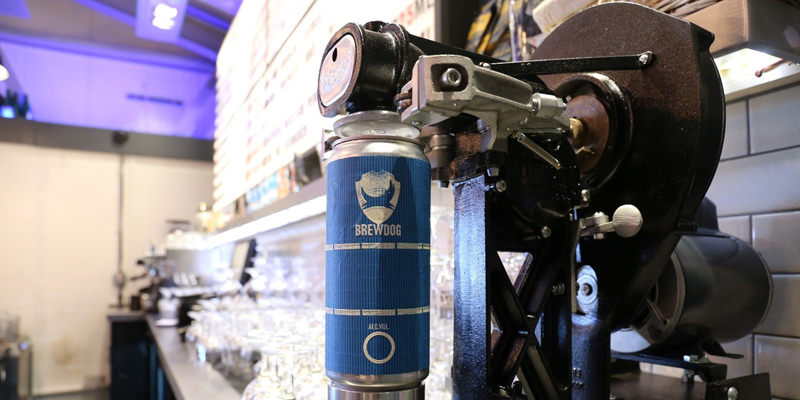A couple of weeks ago, Chris O’Leary of the extremely useful Brew York site tweeted photographic evidence of the trip to his 600th distinct brewery. This is insane. I haven’t been to a tenth as many, yet it still often seems like all I ever do is visit new breweries. But when I congratulated O’Leary on his dedication to the game, I learned that the maniacal Andy Crouch of Beer Advocate stopped counting a decade ago when he got to around 600 breweries visited.
These men are unwell. I advise you to always take their beer advice but never take their vacation advice. Chasing down that many breweries is surely educational and delicious, but no one needs to spend that much time in suburban industrial parks. Some breweries are indeed gleaming, visitor-friendly shrines to beer — if you’re ever in Milton, Delaware, you should go to Dogfish Head — but many more are carved out of defunct textile mills with an orange-watered river on one side and a mayonnaise factory on the other. These places can be depressing, and I say this an avowed lover of brewery taprooms and a known tolerator of life’s scummy side.
But grittiness and inconvenience aside — the dungeon in which Rhode Island’s fantastic Proclamation Ales are brewed also houses a goddamn mushroom farm! — the biggest reason I’m trying to limit my new-brewery excursions is to prevent my home from turning into a beer growler museum. I live in Massachusetts, which for all its purported progressiveness has more than its share of antiquated alcohol laws, one of which mandates that breweries can only fill their own branded beer growlers. This means you can’t just bring the same reusable jug for to-go draft beer from each brewery you visit. No, you need a special growler with the Jack’s Abby logo, and another one from Aeronaut, and of course your Wormtown version. When Beer Research Director Emily and I moved into a new apartment last fall, we culled a dozen or so growlers, and now we’re down to a manageable five, but we only ever refill the one from Cambridge Brewing Company. The other four just collect dust.
 We never refill the Aeronaut bottle anymore, even though the brewery is just a couple miles away and also a favorite of ours, because it has recently upgraded its takeout menu to include aluminum crowlers. Crowlers are filled-to-order quart cans invented by the beer-packaging pioneers at Oskar Blues, and they are superior to traditional glass growlers in just about every conceivable way. They’re not as good at holding spare change or shattering in your car trunk, but outside of that, crowlers are a huge leap forward for the practical brewery souvenir shopper.
We never refill the Aeronaut bottle anymore, even though the brewery is just a couple miles away and also a favorite of ours, because it has recently upgraded its takeout menu to include aluminum crowlers. Crowlers are filled-to-order quart cans invented by the beer-packaging pioneers at Oskar Blues, and they are superior to traditional glass growlers in just about every conceivable way. They’re not as good at holding spare change or shattering in your car trunk, but outside of that, crowlers are a huge leap forward for the practical brewery souvenir shopper.
Glass growlers are, simply put, bad for beer. More conscientious breweries use counter-pressure systems to purge oxygen from growlers before they’re filled, but oxidation will always be a problem with a resealable beer container. I find that growler-smuggled beer tends to degrade noticeably within a day of being opened; the screwtop cap causes more harm than good because it tricks people into thinking they’ve got more of a safety net than they do. Plus, glass is a million times heavier than aluminum and it’s breakable. And in states like Massachusetts that make you assemble personal growler armies if you want to drink fresh beer from multiple breweries, you can quickly end up with half of your net worth tied up in $3 bottle deposits. I don’t begrudge breweries that charge growler deposits because they have to pay for and store hundreds of the damn things, but I quite often walk out of a brewery knowing I’ll never be back, in which case it’s not a “deposit,” it’s just 20-percent surcharge for an unwieldy takeout container.
Some timid souls are skeptical of crowlers because cracking one means committing to 32 ounces of beer in one sitting, and I can see where this might be a problem for people who tend to drink slowly or alone, but at least you know the deal up front. I knew exactly what I was committing to when I bought an oversized can of Amherst Brewing Company’s Russian imperial stout last fall. You might reasonably ask why I knowingly agreed to somehow break my toe while watching Seinfeld alone in my underwear in the middle of the night, but frankly I don’t think you and I are close enough to be discussing my feet and undies in public. The point is I knew I wouldn’t be waking up to leftover stout precariously sealed in the fridge the next day. Buying a crowler is a leap of faith, a declaration of intent. You’re going to drink a quart of beer. That’s only two pints. You can swing it.
I understand why many breweries are clinging to the growler model, especially in states that allow you to fill ones purchased elsewhere. Crowler machines cost a few thousand bucks and it takes a bit of trial and error to perfect their use (the can’s seams can turn out a bit wonky until you get the hang of it). But it’s worth the investment. I thought onsite-filled quart cans sounded like a gimmick when they started popping up a couple years ago, but now I’m fully converted. I’ve purchased my last glass growler of beer.

